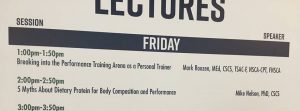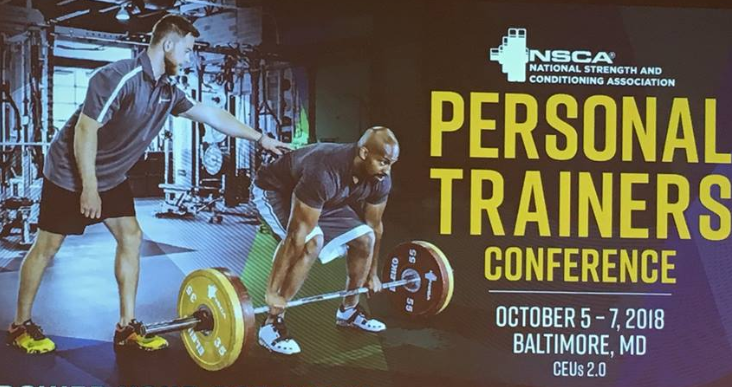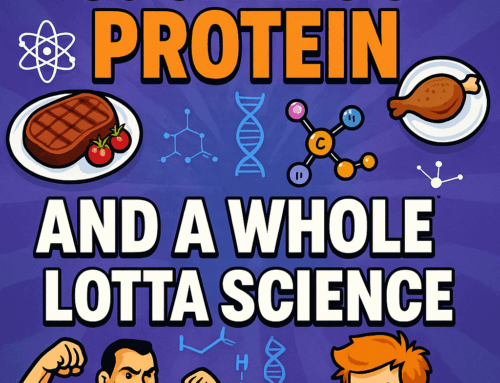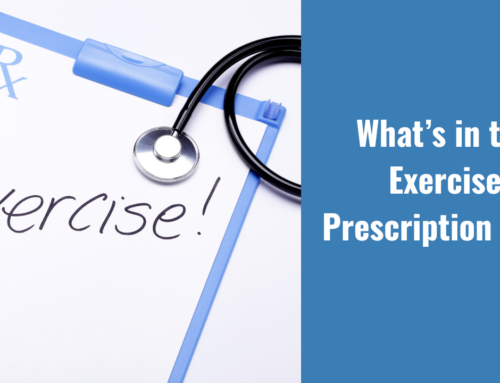[vc_row][vc_column][vc_column_text animation_duration=”1″ animation_delay=”0″]Two weekends ago I presented at the NSCA Annual Personal Trainer Conference in Baltimore.

Three hours after I landed, I was in the gym training without food for 18 hours before, no caffeine, no water and had a crappy HRV reading that AM.
Why on earth would I do such a thing? Do I really hate my body that much to treat it like a stolen car?

At first blush, it appears to go against all the advice I yammer on about here regarding performance as a goal – even if you just want to look good nekkid.
Eustress vs Distress
This is a concept I cover in depth in the Flex Diet Cert. Eustress is stress you can fairly easily recover from. Most of your training should be eustress as you can accumulate the most high-quality training which equals a faster way to your goals of more strength and hypertrophy.
Distress is training that takes you much longer to recover from. Adding a bit of distress training is great to increase your resilience, simulation practice, and makes you into a bad ass (or in nerd speak “more anti-fragile”).
Neither eustress or distress training is “bad” at all – just depends on the context and dose.
The training I did in Baltimore above was definitely distress. Here are 4 points to consider when adding this type of training.
1) Long Eustress
Since I was actually home most of Aug and the traveling I did in Sept was local, I had mostly eustress for my training. It was great to have a routine again and progress was awesome!
A marker I use to help determine eustress is day-to-day changes in HRV (heart rate variability). HRV is a great way to determine how much stress is placed on your nervous system. In my case above, my HRV was pretty darn consistent from one day to the next, which means my body was handling the stressors placed on it quite well.
Take away 1: Have plenty of eustress in place first.
[/vc_column_text][/vc_column][/vc_row][vc_row animation_duration=”1″ animation_delay=”0″ bg_type=”bg_color” bg_color_value=”#f2f2f2″][vc_column animation_duration=”1″ animation_delay=”0″ overlay_opacity=”0″ overlay_opacity_on_hover=”1″ css=”.vc_custom_1523637029177{padding-right: 5% !important;padding-left: 5% !important;}”][vc_row_inner][vc_column_inner width=”1/4″ css=”.vc_custom_1523637490740{padding-top: 20px !important;}”][vc_single_image image=”8939″ img_size=”full” onclick=”custom_link” animation_duration=”1″ animation_delay=”0″ link=”https://miketnelson.com/whos-mr-mole”][vc_column_text animation_duration=”1″ animation_delay=”0″]Who’s Mr. Mole?
[/vc_column_text][/vc_column_inner][vc_column_inner width=”3/4″][vc_column_text animation_duration=”1″ animation_delay=”0″]
If you want to tumble down the never ending pubmed rabbit hole, look up “HRV and Coefficient of Variation.” HRV has been shown to be associated with stress due to exercise training and an accurate method to measure autonomic nervous system parasympathic to sympathetic changes (1-6).
“Overload (OL) training is associated with a reduction and greater daily fluctuation in vagal activity compared with baseline (BL) training, concurrent with decrements in perceived fatigue and muscle soreness.” (3)
-Mr. Mole
[/vc_column_text][/vc_column_inner][/vc_row_inner][/vc_column][/vc_row][vc_row][vc_column][vc_column_text animation_duration=”1″ animation_delay=”0″]
2) Stressors
After upping the eustress training, you can then play with the stressors you want to alter to create more distress. I would I recommend fasting first as a good place to start.
In my case, I did not plan to change all of them at once. I did a fast on that travel day since I am working on fasting during a travel. Historically, that has been very hard for me. I wanted to hit the gym and had time that Thurs before the conference started Friday through Sunday. I opted to not have any caffeine since I wanted to know how I truly felt and get a more accurate baseline of my performance. No worries; I have not tossed out my coffee intake. I never bring a water bottle to the gym unless I am training outside or in a location that is very hot and humid, hence no water. That part was fine. I was super thirsty by the time I got back to my hotel as I did not drink much in the AM or on the plane flight, but I survived.
Take away 2: Pick your stressors carefully and slowly add more over time.
3) Exercise Performance
Even though it is a distress training session, performance should not tank like you just started a keto diet and only get to lick dates for carbs.
In my case, training went really well despite a longer warm up. I did a bit more RPR than usual and slowly worked up to what was a PR on incline DB bench (80 lb DBs for 3 sets of 5-6 reps). DB rows were great and the session lasted over an hour.
If performance had been horrible, I would have cut the session short.
Take away 3: Still monitor performance and don’t be afraid to cut a session short if it is really not there.
4) Recovery
Since it is distress training, by definition your recovery will be longer. Make sure you plan for it. In my case, I knew I would be at the conference for 2 full days and would not be back to the gym until Sunday at the earliest. Even then, since I was at the hotel, that session would be a short “hotel hypertrophy” designed to get some movement more than overload. I would not do anything heavy due to my schedule until Tues 24 hours after being back home. It turns out that I needed it as my HRV was red for two days post and then recovered nicely.
Take away 4: Make sure you plan in extra days for recovery post.
Caution!!!
A word of caution – All the advice given with this method works best when TRAINING is the big stressor in your life. If your lifestyle is the biggest stressor, adding even more stress with training can backfire on you big time. Take a long stretch of eustress, get your lifestyle in order first . . . before upping the stress in your training by doing MASS 2 on 7 gm of carbs after snorting meth-based pre-workouts, you dopamine-driven stress-twitching stress ball. =)
Once your lifestyle is in order, add a bit of distress in a controlled way for greater gainZ .
Summary:
Now you have an outline of how to insert some distress into your training when needed.
Live a little.
Push the gas and let your sphincter pucker.
Remember, you are not that fragile.
-Dr Mike
[/vc_column_text][/vc_column][/vc_row][vc_row animation_duration=”1″ animation_delay=”0″ bg_type=”bg_color” bg_color_value=”#3a3a3a”][vc_column animation_duration=”1″ animation_delay=”0″ overlay_opacity=”0″ overlay_opacity_on_hover=”1″ css=”.vc_custom_1523637613908{padding-top: 5% !important;padding-right: 5% !important;padding-left: 5% !important;}”][vc_column_text animation_duration=”1″ animation_delay=”0″ css=”.vc_custom_1525959703508{padding-top: 10px !important;}”]
Want to learn more cool nutrition tips that you can apply to your clients for better body composition and performance? Check out the Flex Diet Certification.
[/vc_column_text][vc_empty_space height=”30px”][zad_button title=”Flex Diet Certification” align=”center” style=”square” el_color_style=”theme_extra_color_3″ btn_title_color=”#ffffff” btn_title_color_hover=”#729bbf” link=”url:http%3A%2F%2Fwww.flexdiet.com|||”][/vc_column][/vc_row][vc_row][vc_column][vc_column_text animation_duration=”1″ animation_delay=”0″]
References (aka nerd fuel)
1: Nakamura FY, Pereira LA, Rabelo FN, Flatt AA, Esco MR, Bertollo M, Loturco I. Monitoring weekly heart rate variability in futsal players during the preseason: the importance of maintaining high vagal activity. J Sports Sci. 2016 Dec;34(24):2262-2268. Epub 2016 May 23. PubMed PMID: 27214584.
2: Nakamura FY, Pereira LA, Esco MR, Flatt AA, Moraes JE, Cal Abad CC, Loturco I. Intraday and Interday Reliability of Ultra-Short-Term Heart Rate Variability in Rugby Union Players. J Strength Cond Res. 2017 Feb;31(2):548-551. doi: 10.1519/JSC.0000000000001514. PubMed PMID: 27243917.
3: Flatt AA, Hornikel B, Esco MR. Heart rate variability and
psychometric responses to overload and tapering in collegiate sprint-swimmers. J Sci Med Sport. 2017 Jun;20(6):606-610. doi: 10.1016/j.jsams.2016.10.017. Epub 2016 Nov PubMed PMID: 27890479.
4: Proietti R, di Fronso S, Pereira LA, Bortoli L, Robazza C, Nakamura FY, Bertollo M. Heart Rate Variability Discriminates Competitive Levels in Professional Soccer Players. J Strength Cond Res. 2017 Jun;31(6):1719-1725. doi: 10.1519/JSC.0000000000001795. PubMed PMID: 28538325.
5: Flatt AA, Esco MR, Allen JR, Robinson JB, Earley RL, Fedewa MV, Bragg A, Keith CM, Wingo JE. Heart Rate Variability and Training Load Among National Collegiate Athletic Association Division 1 College Football Players Throughout Spring Camp. J Strength Cond Res. 2017 Oct 10. doi: 10.1519/JSC.0000000000002241. [Epub ahead of print] PubMed PMID: 29023330.
6: Flatt AA, Howells D. Effects of varying training load on heart rate variability and running performance among an Olympic rugby sevens team. J Sci Med Sport. 2018 Jul 21. pii: S1440-2440(18)30402-X. doi: 10.1016/j.jsams.2018.07.014. [Epub ahead of print] PubMed PMID: 30055959.[/vc_column_text][/vc_column][/vc_row]
Campeonato Brasileiro Série A, Série B, Série C e Série D; Copa do Brasil; Paulistão; Campeonato Carioca; Campeonato Mineiro; Gauchão; Campeonato Paranaense; Baianão; Campeonato Cearense; Campeonato Pernambucano; Goianão; Candangão; Campeonato; Potiguar; Parazão; Campeonato Sergipano; Campeonato Alagoano; jogos de hoje Campeonato Catarinense.




Leave A Comment